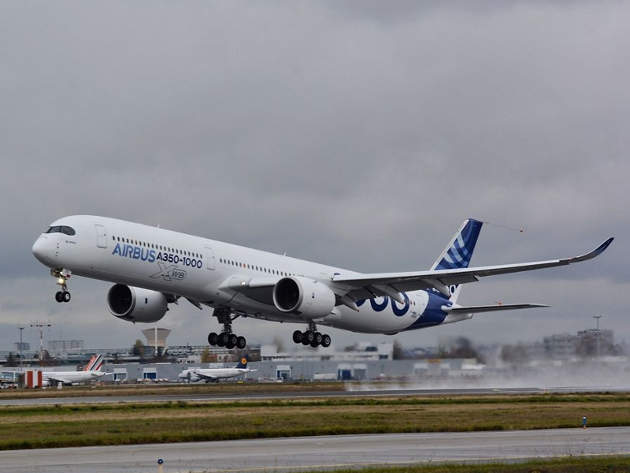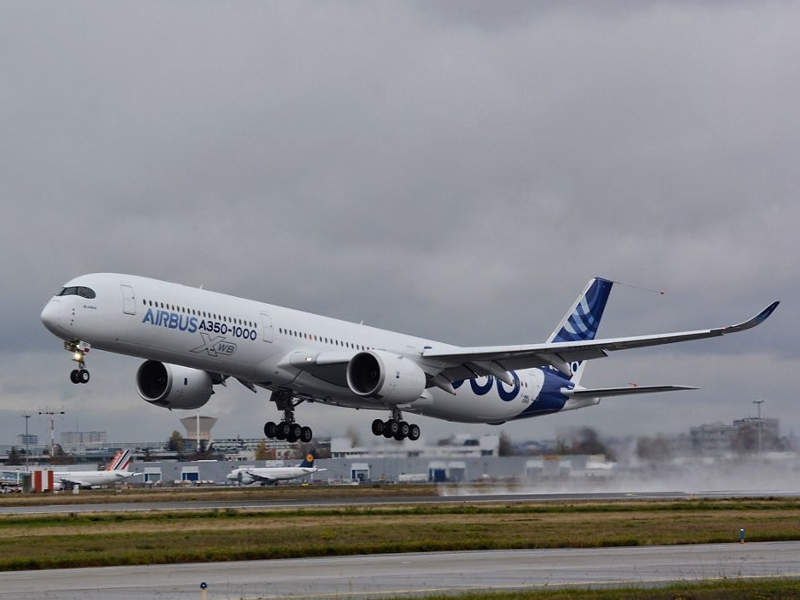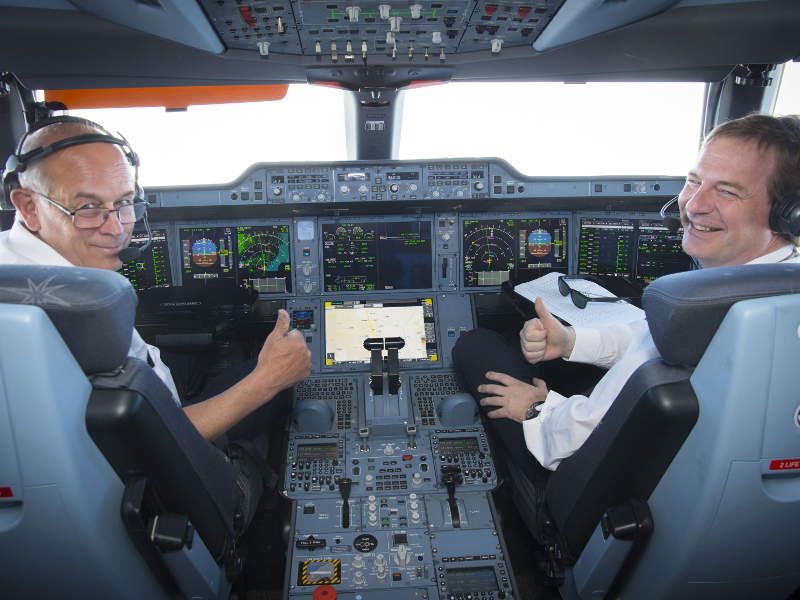The A350-1000 aircraft is the longest member of the A350 XWB family of twin-engine passenger jets. The aircraft was developed by Airbus to target the mini-jumbo segment, which includes large twin-engine jets carrying 350 people. It will also serve long-haul routes such as Shanghai-Boston and Paris-Santiago.
Final assembly of the first A350-1000 prototype began in February 2016. The first flight test of the aircraft was completed in November of the same year at Toulouse-Blagnac Airport, France.
The aircraft underwent cold-weather trials in Iqaluit, Canada, and was exposed to temperatures as low as -37°C during an overnight cold soak in March 2017.
A long-distance flight was completed in May 2017, with 310 passengers on board.
The A350-1000 aircraft obtained type certification from the Federal Aviation Administration (FAA) and the European Aviation Safety Agency (EASA) in November 2017.
Airbus received a total of 169 orders for the A350-1000 aircraft from 11 customers across five continents. The aircraft entered service with the launch customer Qatar Airways in February 2018.
Airbus A350-1000 design and features
The A350-1000 is a stretched variant of the A350-900 twin-aisle, wide-body jetliner. The new variant features the latest aerodynamics and innovative technologies to increase fuel efficiency by 25% compared to its long-range competitor.
The fuselage of A350-1000 is made of lightweight carbon-fibre reinforced plastic (CFRP). The aircraft shares approximately 95% of its systems with the A350-900 aircraft, but its longer fuselage can accommodate 40 more passengers than the A350-900. The A350-1000 can fly up to a range of 8,000 nautical miles.
Environment-friendly materials are being used to build the aircraft in order to reduce harmful effects. The aircraft integrates advanced flight control systems, a modified wing trailing-edge, and a new six-wheel main landing gear. It has a total of 41 exterior lights, including white and red in the wings, fuselage and tail.
It has an overall length of 73.78m, a height of 17.08m and a wingspan of 64.75m. Its wheelbase and track width are 32.48m and 10.73m respectively.
A350-1000 cabin details
The aircraft features a long and spacious cabin to accommodate up to 366 passengers in a typical seating configuration. It can accommodate up to 440 passengers in a higher density configuration.
The cabin offers a width of 5.61m and includes a typical three-class configuration. The economy class features 18in-wide seats.
It also offers e-mail and Wi-Fi connectivity for the passengers and is equipped with air-conditioning, lighting, acoustics, in-flight entertainment (IFE), galleys, electrics, washrooms, and water waste systems.
The aircraft can house 44 LD3 containers and 14 pallets under floor. The total bulk loading volume of the aircraft is 208.2m³.
Engine and performance of A350-1000 aircraft
The A350-1000 aircraft is powered by two Trent XWB-97 turbofan engines, which generate a thrust of 97,000lb during take-off and are manufactured by Rolls-Royce. The maximum fuel capacity of the aircraft is 156,000l.
The aircraft has a maximum operating speed of Mach 0.89 and a range limit of 14,800km. It has a maximum ramp weight of 308.9t and zero fuel weight of 220t. The maximum take-off weight (MTOW) and landing weight of the aircraft are 308t and 233t respectively.
Easterline Advanced Sensors was awarded a contract by Rolls-Royce in February 2014 to supply sensors for the Trent XWB engines.





